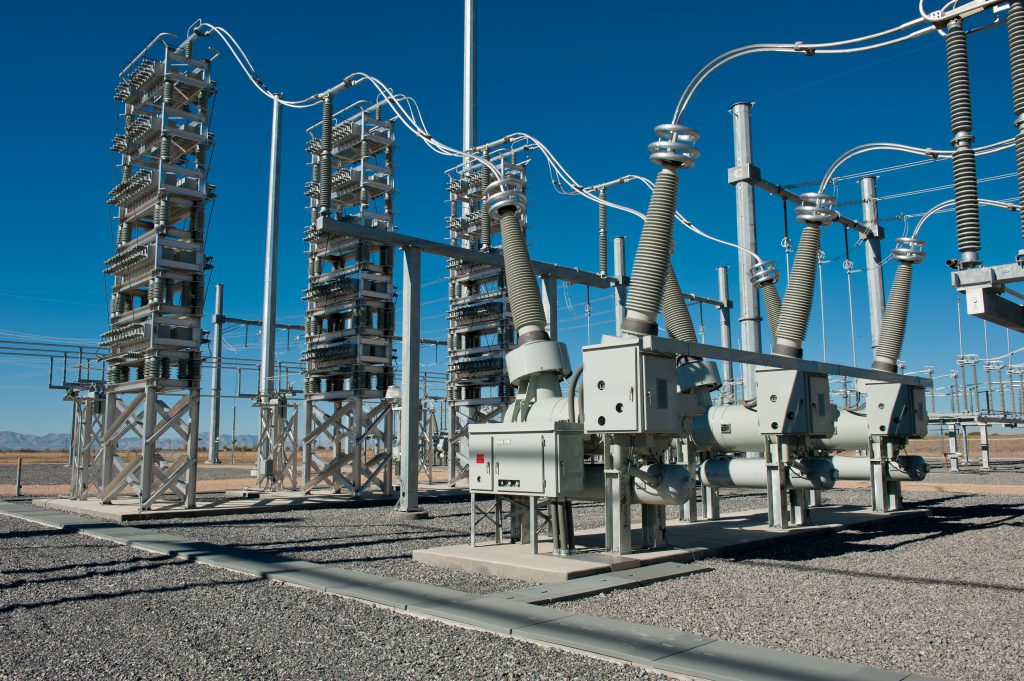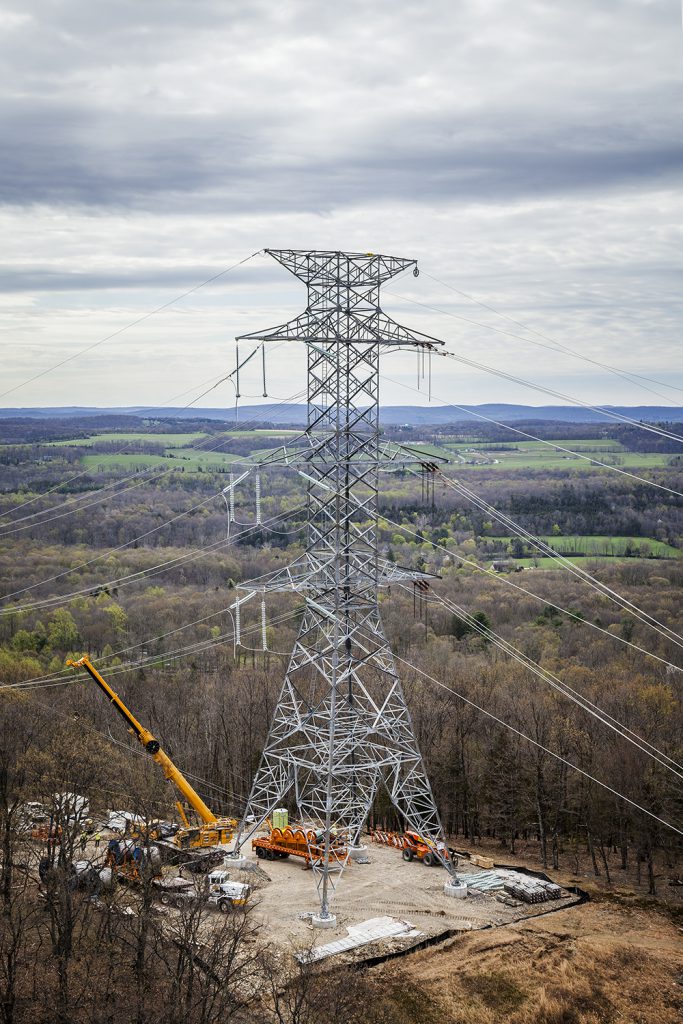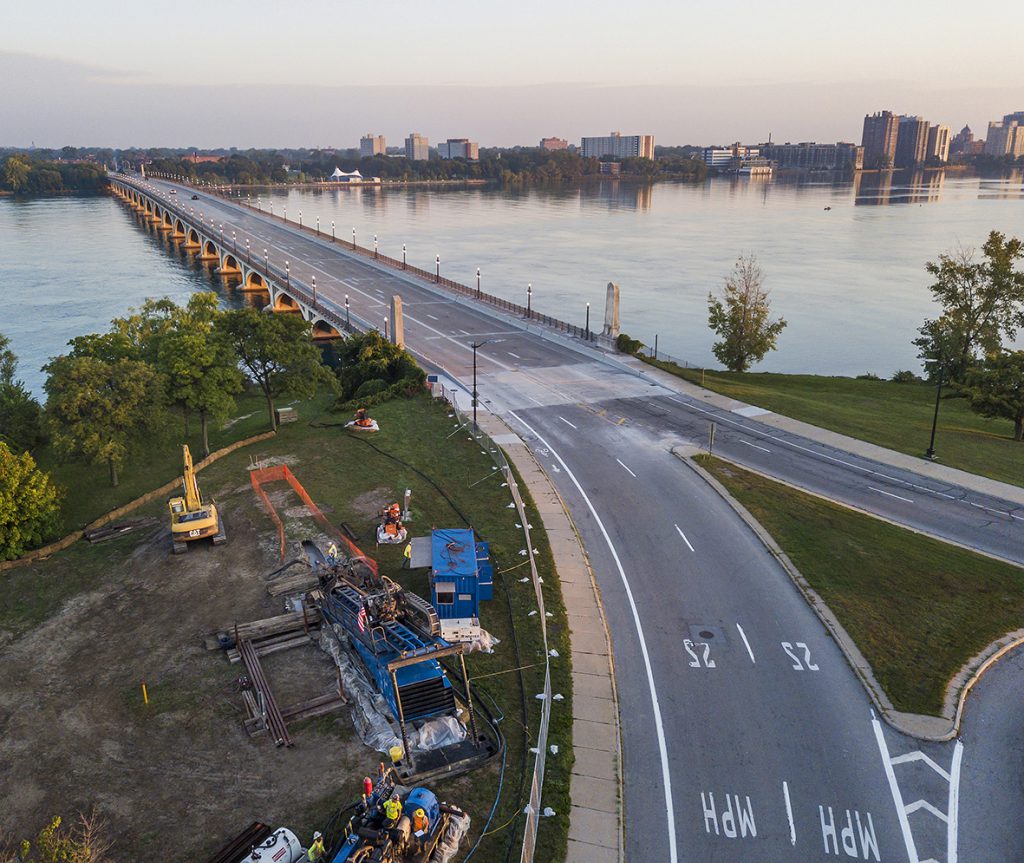The flip of a switch. That’s all it takes to turn on the lights, charge your computer or start a load of laundry. But behind the scenes there is a complex system of transmission and distribution lines, substations and other critical infrastructure.
Utility companies managing and operating these systems face tremendous responsibility and significant challenges — from new regulations, aging infrastructure and looming workforce shortages, to the impact of renewable energy on the electric grid. Fortunately, with support from engineering and technical experts at Kiewit, utilities don’t have to tackle new obstacles alone.
In the past, utilities were heavily focused on investments in power generation to keep up with the growing demand from customers. As the demand leveled off, investment shifted to power delivery — the infrastructure that transports electricity from the plant to the end user. The transmission and distribution market has doubled since 2010 and is expected to hold steady with an annual investment of about $70 billion through 2022.
“We are prepared to help clients effectively maneuver through this shift, offering three valuable things,” said Jon Gribble, executive vice president at Kiewit Engineering Group Inc. “We reduce risks, maximize efficiency and build confidence by providing the right people, technologies and solutions. We can offer new methods to enhance the reliability, security and longevity of the power delivery systems that people, businesses and our economy depend on.”
A people-powered industry
According to the U.S. Bureau of Labor Statistics, utility company employees have had historically longer tenures than other industries. However, times have changed and the U.S. Department of Energy estimates that roughly 25 percent of employees working in the power industry will begin plans for retirement in the next five years.
“The obvious challenge is that utilities need to attract new talent and fill open positions,” said Cap Fergen, distribution planning and design manager at Kiewit. “A real dilemma is the loss of institutional knowledge and hands-on system experience that long-time utility employees have accrued. That’s where our team at Kiewit can help.”
In a market where the pressure to deploy capital quickly continues to mount, retirement and attrition at utility companies will make it more difficult to get projects done. At the same time, safety cannot be compromised.
“Power lines and substations are considered a zero-error environment,” said Paul Conry, business development manager. “Any design flaw or failure to adhere to construction standards exposes others to safety-related risks. Safety is more important than anything else and the backbone of a trusting relationship with clients.”
The U.S. electrical grid consists of an estimated 55,000 substations, which serve a critical role in transporting electricity from power plants to end users.
The majority of power lines in the U.S. were installed 60 or 70 years ago, operating beyond their intended life cycle and in need of replacement.
A well-connected system
On August 14, 2003, a faulty alarm failed to properly tip off utility operators to a downed high-voltage transmission line in northeastern Ohio. Fifty million people lost power, some for up to two days, marking the biggest blackout in North American history at an estimated cost of $7 billion to $10 billion. It was a stark reminder that the operations and assets that comprise the electrical grid are highly interdependent — a key driver behind the meticulous planning required to repair or replace transmission lines.
For example, to take a high-voltage transmission line (typically 345 kilo-volts or above) out of service for repairs, utilities must plan years in advance and build redundancy around the line to avoid potential outages. Even lower-voltage lines require a careful, coordinated plan, since taking it out of service might overload other lines.
To mitigate these risks, Kiewit uses project management technologies that integrate detailed planning, implementation and monitoring.
“To maintain service to customers, utilities have a limited window of time to schedule outages for repairs or replacement of transmission and distribution lines,” said Erik Brinkman, who heads up line construction for Kiewit’s power business. “Using comprehensive, real-time project management tools, we are able to give utilities the confidence and certainty they need.”
Kiewit’s project management technology can also help utilities replace aging transmission and distribution lines more efficiently. According to the American Society of Civil Engineers, the majority of power lines were installed 60 or 70 years ago, operating well beyond their 50-year life cycle. With roughly 640,000 miles of high-voltage transmission lines in the U.S., repairing or replacing the lines is a huge undertaking.
“We’ve expanded our ability to self-perform line construction work to help expedite line replacements,” adds Brinkman. “With our project management tools, self-perform capabilities and partnerships with local contractors, we are equipped to tackle hundreds of miles of distribution lines.”
Disrupting the grid
The increased use of renewable energy, electric vehicles and energy storage is putting new demands on the existing grid. It presents both concern and new opportunity.
A large wind farm in rural Kansas would require additional transmission and distribution lines to transport electricity to where it’s needed most, in more densely populated areas. Peak demand could be more effectively managed using applications that couple solar power generation with energy storage, which captures energy in sunny, high-production periods and stores it for later use.
The electrification of vehicles (EV) is gaining traction in the transportation and logistics industry. What was once relegated to cars or personal vehicles has evolved into trucks and delivery vehicle fleets. As a point of reference, a fast-charging station serving 20 cars simultaneously would draw approximately 2 megawatts, or enough to power 1,000 homes. Multiply that to account for a fleet of 100 vehicles, which could have an enormous impact.
“To accommodate EV fleets without compromising the grid’s integrity, clusters of charging stations will need to be installed quickly,” said Sam Scupham, who focuses on design engineering aspects of emerging markets for Kiewit Engineering Group Inc. “We have established partnerships with EV charging station manufacturers to help streamline the process and can leverage the expertise of our engineers to work through the intricacies of connecting to the grid.”
Many utilities are trying to determine how to take advantage of energy storage to enhance their systems. Kiewit is helping evaluate new technologies as they are introduced and analyze overall capital and lifetime costs.
One of the most practical applications is using energy storage to hold energy back and reduce the load on an older transmission line, eliminating the need to replace the line. A similar approach is being used by energy-intense manufacturing facilities to help curtail higher rates during peak-usage times. Using energy storage in conjunction with gas turbines at power generation facilities is also being explored as a way to reduce operational costs and wear and tear on the equipment.
“We are truly a partner to our customers and want to help them figure out how to use this technology to their benefit, from a quality and economic perspective,” said Reid Strain, energy storage manager. “We are very purpose-driven. We want this to succeed. We want you to succeed.”






